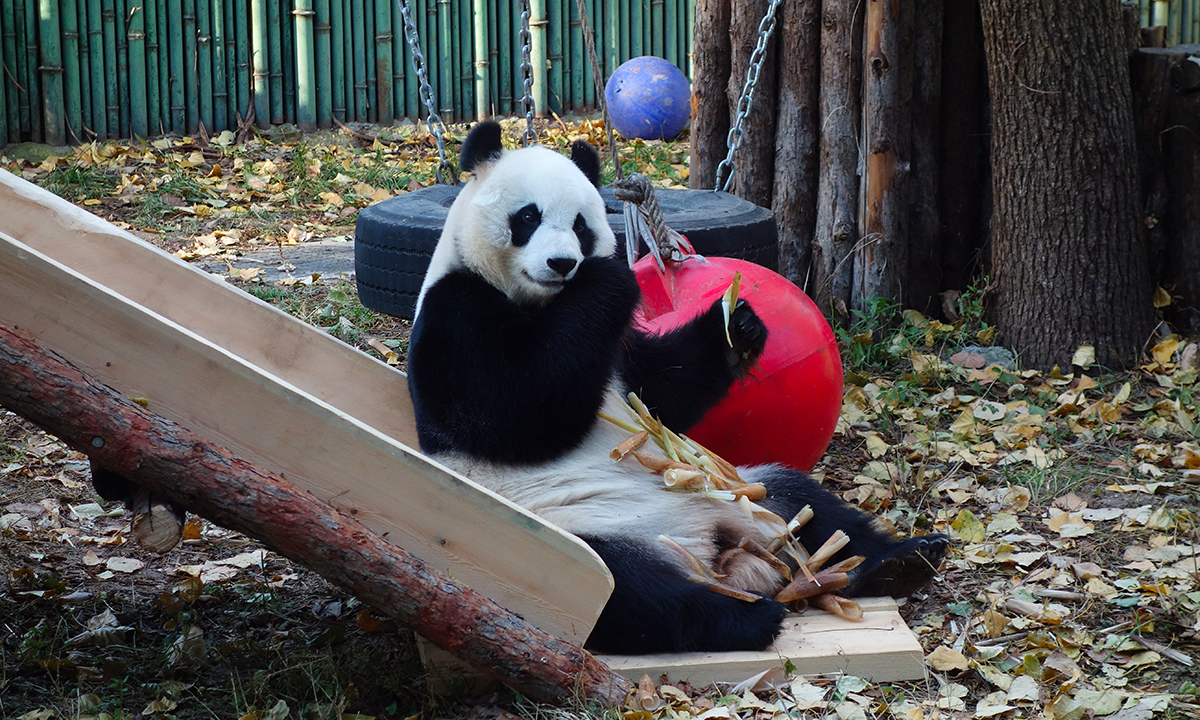ARTS / CULTURE & LEISURE
China collaborating with 26 institutions in 20 countries on giant panda conservation

A giant panda enjoys a slide and munches on bamboo shoots at the newly renovated Panda House of Beijing Zoo on November 5, 2024. Photo: VCG
China has established 67 giant panda nature reserves, while the wild panda population has grown to approximately 1,900. Additionally, China has collaborated with 26 institutions in 20 countries on giant panda conservation, successfully breeding 43 litters and 71 cubs, said Guan Zhi'ou, head of the National Forestry and Grassland Administration, on Tuesday.
Guan stated that China's giant panda habitat conservation system has become increasingly refined, and the wild population is steadily growing. Since the official establishment of the Giant Panda National Park in 2021, a conservation system centered on the park has been developed, expanding the total protected area from 1.39 million hectares to 2.58 million hectares.
"The global captive giant panda population has now reached 757, with the population structure continuing to improve," he noted.
"Currently, 85 percent of the wild giant panda population benefits from habitat connectivity and genetic exchange between groups."
Guan noted that China is accelerating the development of a modern civilization in which humans and nature coexist harmoniously. He added that this initiative has created new opportunities and injected fresh momentum into giant panda conservation efforts.
The quality of habitats is directly linked to the survival and reproduction of wild giant pandas. According to the Xinhua News Agency, over the years, China has continuously strengthened the conservation of wild giant panda populations and their habitats through major ecological initiatives such as natural forest protection, reforestation and grassland restoration, wildlife protection, and the establishment of nature reserves.
“In 2003, China launched a program for the wilderness training and reintroduction of captive giant pandas. To date, 12 captive pandas have undergone wilderness training and been released into the wild, with 10 surviving,” said Wei Rongping, a senior engineer at the national giant panda conservation and research center.
Wei noted that during this process, an effective technical system for wilderness training and reintroduction has been established. This system provides a scientifically sound and effective approach to addressing the issue of inbreeding among giant pandas, revitalizing small wild populations, and promoting their sustainable development.
With continuous advancements in technological support, the captive giant panda population has expanded significantly. Key technical challenges, such as breeding and disease prevention, have been successfully addressed. The genetic diversity of the captive population has steadily increased, providing strong support for conservation research, public education and reintroduction efforts.
According to Guan, China will continue developing the Giant Panda National Park and establishing a world-class research and collaboration platform for giant pandas. It will actively promote extensive cooperation and exchanges, working together with global partners to deepen and strengthen giant panda conservation efforts.



